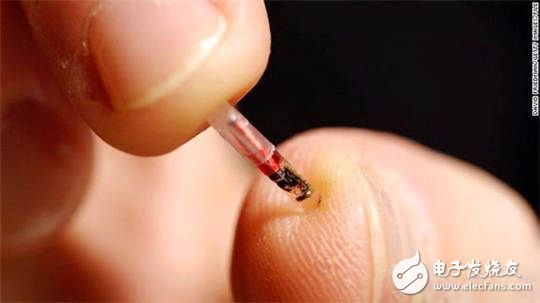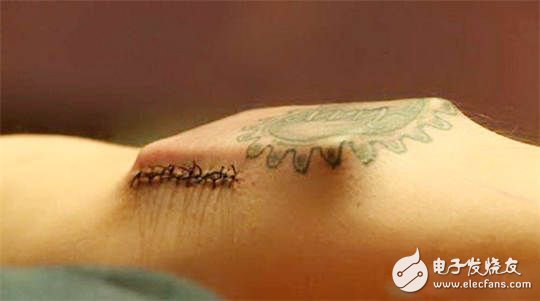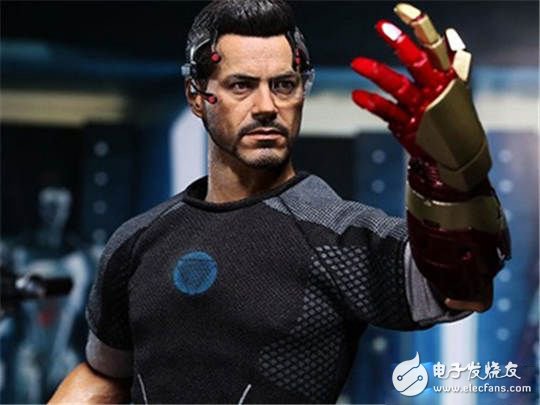
Wearables have become a popular product type, but true wearable computing is not about wearing the device, but embedding it in the body. After implanting the chip into the body (connected to the nerve or placed in the muscle or skin), humans and computers will be able to achieve a completely new form of synergy.
Way of working
At present, the use of human implants is very clear, that is to serve the medical field. “When we have the ability to control or communicate with implanted devices, we can make a range of services possible, such as real-time tracking of tumor growth or positioning and control of drug delivery,†said Vaishali Kamat, head of digital health at Cambridge Consultants. . He believes that this technology can provide targeted nerve stimulation through miniaturized implants in the future - this is called neural modulation.
For example, after the body is equipped with any intelligent physiological monitoring device, the device can automatically make an emergency call assuming that the user is about to have a heart attack. "Neurostimulatory therapy can be used to deal with impending epilepsy, or more severe Parkinson's tremors," adds Kamat. This treatment can also be used to treat diseases such as depression or obesity due to the treatment of direct nerves.
Medical use
The medical use of implantable electronic devices is potentially huge. "This technology can be used to help tissue recovery after brain injury, or to control diabetes through intelligent control of insulin levels," said Collette Johnson, Plextek ConsulTIng Medical Business Development Manager. "Injectable electronics can also help the brain's chemical regulation imbalance. Patients, or treatment of growth hormone-related diseases. They can also be used to control prostheses by responding to muscle movements."
In June of this year, Harvard's Lieber research team published an injectable mesh that detects electrical signals in the brains of mice to help scientists understand how brain cells communicate. This mesh is implanted into the brain through a needle with a diameter of only 0.1 mm.
A new round of wearable technology?

"Microelectronic devices make these treatments possible, and they can be implanted into the body's ideal position through minimally invasive surgery," Kamat said. Many people may still have conservative opinions about physical implants, but Kamat pointed out that ID chips implanted in pet skin have been used for many years.
Bluetooth control
“We can indeed implant wireless transmitters into the human body and transmit signals through external devices,†Kamat said. “The existing dedicated medical devices have already achieved this, such as pacemakers, but recently, researchers have The use of smartphones in this area has generated interest."
The problem is that this requires implanting a device with some kind of wireless protocol into the human body, and Bluetooth is clearly the most reasonable choice. “It’s not a simple matter to send a Bluetooth signal out of the human body because the human body absorbs most of the 2.4 GHz signal,†Kamat said. “But we are working on this and have developed a viable Proprietary technology."
Is this a bio-hacker?
As far as implantable electronics and embedded wearables are concerned, the topic of Biohack and Cyborg will follow. However, the purpose of the former is not to create a more superior race. “From implantables to gene sequences, from research plants, bacteria to blood, electronic sensors, the types of bio-hackers are very different,†said IEEE technologist Dr. Kevin Curran. “But bio-hackers do believe that technology can We strengthen ourselves."
Researchers at the University of California San Diego distribution have recently developed a bio-tattoo that monitors sweat. “This can be attributed to biohackers because these sensors attached to the skin track the athlete's chemical balance to assess their athletic performance,†Curran said.
The natural process of self-quantification?

“Implants can be used to monitor activity and expand the capabilities of existing wearables in the health field,†Johnson said. “They can provide feedback to users, as well as hormone levels, adrenaline release, lactose accumulation, hydration and Nutritional information."
In recent years, wearable technologies and applications have become an important way to make people more interested in sports. “Healthy apps are the best-selling type in app stores, and self-quantitization is becoming more popular,†Curran said. “When wristband devices are getting more and more powerful, there are more and more types of sensors.â€
Curran mentioned the Samsung Galaxy S5 and Apple's AppleWatch, both of which have heart rate tracking. “But their abilities are still limited and they are prone to inaccurate readings,†he said. For any medical use, implanted devices require a high degree of accuracy and reliability.
Identity and mobile payments
Using smart cards to take public transportation or using mobile phones for mobile payments sounds like a thoroughly modern technology, but a large number of identity-based transactions can be easily done with implants. “If you think of implantable electronics as an alternative to some of the devices we have in our lives, it does have many uses, such as identity authentication and payment,†Kamat said. “For example, your wrist is tiny. The chip can be used as your credit card or driver's license."
"Implantable electronic devices not only enable more accurate sensing of different physiological parameters, but also allow us to respond to things that the body can't sense, such as sound or light at a specific frequency," adds Kamat.
The ability to implant electronic devices is applicable to all organisms, not just humans. “Implantable electronics can also be used in non-medical areas, especially for environmental monitoring of plants in tropical rainforests,†Johnson said. “The information gathered from them can help us better understand specific environmental impacts, and in others. Methodological adjustments are made in the ecosystem."
However, this technology is more to serve our humanity. “At the end of the day, we want to make all the surrounding electronic devices disappear and directly 'know' how to improve the quality of life,†Curran said. “Where is there any better place to accommodate these devices than our bodies?â€
Solar Lighting,Solar Pole Lights Outdoor,Solar Induction Lamp,Sun Powered Lights
t-smartlight , https://www.t-smartlight.com
